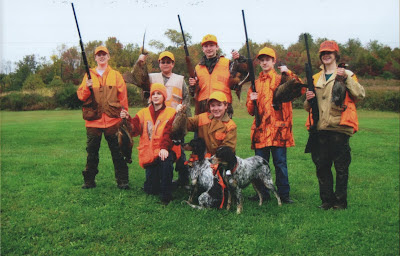By Stacey Federoff Pittsburgh Tribune Review
Above the idyllic surroundings of Mick Goodman’s 23 acres in the hills of Hempfield, the farmer has noticed more vultures circling.
Goodman, who is raising about 40 white-tail deer on his farm, said deer inside his fences and outside in the wild have been dying from Epizootic Hemorrhagic Disease, or EHD, a viral infection.
 |
Mick Goodman feeds a a two and a half year old whitetail buck named
Justified on September 7, 2012 on his farm near New Stanton.
Several deer on Goodman's farm have recently succumb to
epizootic hemorrhagic disease or EHD, a viral infection that is
almost always fatal in deer. At the time this photo was taken,
Goodman was concerned about the amount that Justified had been
panting which he says seems to be an early symptom of the
disease process. Eric Schmadel | Tribune-Review
|
“These animals suffer like no other,” he said. “It’s a nasty disease.”
Goodman said he believes nine deer in his herd were infected with EHD, including two that survived thanks to a “very potent respiratory drug.”
The Pennsylvania Game Commission, which regulates wild deer, has suggested that the only way to eradicate the disease is to wait for the first hard frost.
Goodman said he is concerned that in the weeks until then, more of his animals could die of the infection. He believes more research should be done to determine what is causing its spread and to better manage it.
“If it was the beef cow that had this or the hog that had this, the state Department of Agriculture would be throwing money at this,” he said.
The agriculture department regulates livestock, including the 696 farms across Pennsylvania that raise elk, deer and moose.
David Griswold, assistant director for the department’s Bureau of Animal Health and Diagnostic Services, said because EHD has been confirmed only in 2002, 2007 and 2011, its sporadic nature makes it difficult to treat or vaccinate against.
“It’s out there in nature, and there’s only so much you can do to take the deer away from the outdoors,” he said.
The disease has been found in at least 10 other states, includingWestern states such as Montana, Oklahoma and Kansas, as well as West Virginia and Delaware.
 |
| Biting Midge |
A midge, or biting fly, carries the disease when it bites one animal then flies to another.
The game commission is waiting for test results sent to the University of Georgia’s Southeastern Cooperative Wildlife Disease Study from three deer — two from Greene and Ohioville townships in Beaver County and one from Summerhill Township in Cambria County — believed to have been infected by the virus.
Confirmed samples are hard to collect because after a deer shows symptoms, the animal usually dies within eight to 36 hours, said Jerry Feaser, press secretary for the game commission. Signs of the disease include respiratory distress, swelling, fever, excessive salivation, lethargy and loss of appetite.
It is not related to Chronic Wasting Disease, which has similar symptoms, and is more communicable.
George Hazard, president of the Pennsylvania Deer Farmers Association, said a vaccine has been developed, but it may ward off only one strain of the mutating virus.
He compared it to pneumonia in humans, which affects each person differently.
“Sometimes, you can save the animal; sometimes, you can’t,” he said. “It depends on your system and how it combats the diseases.”
Deer are difficult to vaccinate, Griswold said, and many farmers do not have the facilities to administer an injection to each animal every year.
For farmers, insecticides costing $120 per gallon are available but are not completely effective, because wild deer could bring the biting flies close to a fenced-in property, Goodman said.
Griswold suggests keeping deer from roaming near wet areas, where the flies congregate, and instead use artificial water sources.
Feaser said the flies travel on warm air currents, most prevalent when major hurricane-force storms begin in the South and travel to Pennsylvania.
“When they get here, there’s not the immunity built up within our population to fend off this disease,” Feaser said. “(The flies) can’t live at this latitude, and the first cold frost comes in and — bang — it’s gone.”
Hazard, who has a herd of about 150 animals on his 100-acre farm in Mifflintown, Juniata County, said it’s difficult for farmers to accept that advice and watch the animals suffer.
“Most of us are hunters, and we care about the deer, more so than most people do,” he said. “Dog, cat, deer, I don’t care what it is, you should take care of those animals. It’s our responsibility to take care of them.”
Because the first frost in Pennsylvania usually doesn’t occur until the end of October, Griswold said hunters beginning archery season in the area on Sept. 15, or statewide after Sept. 29, could run into sick or dead deer during their treks.
The game commission asks hunters and residents to report any suspicious deer by calling its regional office at 724-238-9523.
While EHD is not spread from deer to deer without the midge and it is not infectious for humans, hunters should steer clear of animals that might be infected, Feaser said.
“If you know it’s not a healthy animal, don’t eat it. It’s just a common-sense philosophy,” he said.
In the coming weeks, Goodman said he’ll just wait for the morning he can wake up to a thin coating of ice marking the midges’ death knell.
“I’m praying for a hard frost, early frost, to save my animals,” he said.














